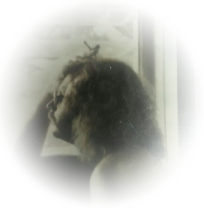Like astrology signs and the Enneagram, the psychological framework of attachment theory has become a popular blueprint for understanding the self. But as my colleague Faith Hill wrote last weekend in The Atlantic, the four attachment “types” aren’t as cut-and-dried as they may seem. In fact, the whole theory is widely misunderstood.
Anxiously Attached
In the 1950s, the psychologist John Bowlby coined the term attachment to refer to the bond formed between an infant and its caregiver. He argued that this formative connection would go on to shape how an infant related to and bonded with other people for the rest of its life. His theory eventually led to the establishment of three different attachment “styles”: securely attached (describing people who are generally open and trusting); anxiously attached (describing people who “long for closeness but are paranoid that others will hurt them, and are thus preoccupied with validation,” as Faith puts it in her story); avoidantly attached (describing those who, “driven by the same fear of abandonment, keep others at arm’s length”); and disorganized, an honorary fourth type which combines anxious and avoidant traits and is a more recent addition to the taxonomy.
Attachment theory was once the provenance of Psychology 101 lectures and perhaps also the psychotherapist’s couch. But today, the framework’s tidy behavioral-identity labels make it a natural candidate for online virality. Attachment theory has crossed the threshold into Gen Z memedom: In a Vox article published earlier this week, the writer Allie Volpe cited an attachment-theory TikTok that’s been viewed nearly 6 million times. That 37-second clip depicts a woman’s descent through a cascade of imagined worst-case scenarios after she wakes up to find that her boyfriend hasn’t texted good morning—“what dating someone with an anxious attachment style can look like,” the text above her head reads. If the video’s more than 3,600 viewer comments are any indication, the sketch strikes a chord.
This new popularity has brought with it a serious misconception about the framework: Many people seem to believe “that one’s style is set in stone during childhood, determined by connections with early caregivers, and doomed to play out in every relationship thereafter,” Faith writes. But the reality is much more complex.
In 2021, The New York Times attributed attachment theory’s renewed spotlight to the 2010 self-help book Attached: The New Science of Adult Attachment and How It Can Help You Find—And Keep—Love. (Anecdotally, I can vouch for this book as the catalyst for at least one of my fellow elder-Millennial friends’ recent, enthusiastic preoccupation with the three main types.) But even the book’s authors are inclined to position attachment as more of a fluid tendency than a hard-set trait—as Faith explains, a “working model” that you’re constantly updating: >>> Read More

